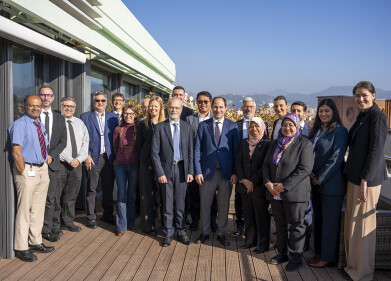Air clean up
How Much Impact Does Closing Roads Have on Pollution?
May 17 2019
The London marathon might have proven the resilience, willpower and incredible stamina of the more than 40,000 people who finished the race. It also proved beyond a shadow of a doubt that removing cars, vans and other traffic from the city’s streets has a dramatic and almost instantaneous impact on air pollution.
An investigation by environmental campaign organisation Global Action Plan uncovered the news by using air quality data collected by air monitoring stations throughout the city. With concrete proof that closing roads to vehicular traffic can give air quality a significant boost, there is likely to be a concerted push from concerned citizens and determined activists alike for the government to improve air quality and reduce transport-related pollution within the capital.
A staggering impact
Global Action Plan analysed data collected by Kings College London from its various monitoring stations located along the route of the London Marathon. Their study found that on the day of the race, pollution levels had fallen by as much as 89% compared to the three Sundays before it took place. They also found that pollution levels returned to normal almost immediately after the traffic was allowed back into the restricted area.
It’s not the first time that such a correlation has been uncovered, either. Last year, Newcastle city centre played host to a five-day cycling event, during which time cars were banned from much of the metropolis’ central thoroughfares. The streets concerned saw a significant drop in air pollution, with areas that were once choked by smog now virtually fume-free altogether.
The Urban Observatory, a branch of Newcastle University, plotted the falling pollution levels in graph form using their sensitive monitoring equipment. The same organisation has also found similarly low levels of contamination in the early morning, when commuters have not yet made the journey to work and the roads are free from traffic.
Time for action
In 2008, the EU introduced its Ambient Air Quality Directive, aimed at cleaning up urban airways. In particular, the directive decrees that concentrations of nitrogen dioxide (NO2) should not exceed 40μg/m3 in any EU city. Unfortunately, a multitude of streets in towns and cities all across the UK regularly flout this requirement, but the findings from the London Marathon and the Newcastle cycling event point to an easy solution to the problem.
Of course, eradicating vehicular traffic is not a feasible option for the millions of city-dwellers who must get to and from work every day. However, the increasing uptake of environmentally-friendly road transportation is a step in the right direction. Electric vehicles (EVs), cars powered by hydrogen and hybrid engines are all ways of removing fossil fuels from our city centres and easing the stress on urban airways.
The good news is that London recently announced it will host the world’s first fleet of hydrogen-powered double decker buses. The vehicles, which only emit water from their exhaust pipes, are scheduled to hit the city’s streets by 2020, while London already boasts 165 zero-emissions buses – the largest fleet of its kind in Europe.
Events
Feb 05 2025 Nantes, France
Feb 16 2025 Kampala, Uganda
Feb 26 2025 Chennai, India
Feb 26 2025 Tulsa, OK, USA
WATERTECH CHINA (GUANGDONG) 2025
Mar 05 2025 Guangdong, China












